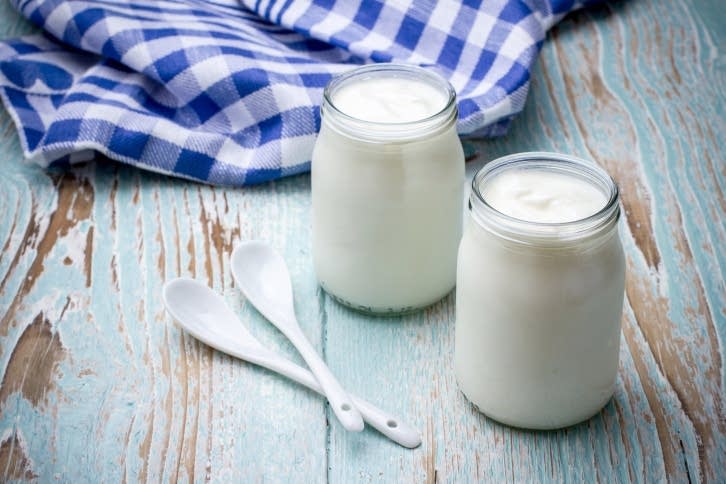
Cheryl Sternman Rule, author of Yogurt Culture and founder of Team Yogurt, explains the differences between milk from cows, goats and sheep when it comes to making homemade yogurt. She also shares her recipes for Blood Orange, Kalamata, and Red Onion Dip and Homemade Yogurt.
Melissa Clark: What's the difference between regular yogurt and Greek yogurt?
 Cheryl Sternman Rule
Photo: Paulette Phlipot
Cheryl Sternman Rule
Photo: Paulette Phlipot
Cheryl Sternman Rule: The exact difference is you are straining out the whey, which is the liquid part of the yogurt. If you take what we consider regular, traditional-style yogurt, you have the milk proteins, which are the solids, and you have the whey, which is the liquid. They are whisked together.
When you strain them out, the whey falls through the straining mechanism, whether it's a piece of cheesecloth or it's a fine mesh strainer. The whey separates out and the milk solids remain. Because you have taken out the liquid, they are very, very creamy and concentrated in protein.
MC: Most of the yogurt that we see in the yogurt case is made from cow's milk, but you can also find goat-milk yogurt and sheep's milk yogurt. Do all of these animals' milk work just as well for making yogurt?
CSR: They do. They all have different properties, so they do produce a yogurt with different textures and different flavor profiles.
Goat-milk yogurt is very delicate. It has smaller buttermilk particles than cow milk, so the yogurt itself, after it's fermented, has a looser set. It's a little bit more pourable. Some people find it easier to digest. If people have a cow-milk allergy to lactose, they can often digest goat milk and goat-milk yogurt because it has less lactose.
The other difference with goat milk and cow milk is that the protein -- which is called casein -- in milk is a different variety of casein in goat milk than in cow milk. Again, people who are milk-allergic may be milk-allergic to the casein in cow's milk but not to the casein in goat's milk.
MC: I guess the same would apply to sheep's milk as well?
 Yogurt Culture
Yogurt Culture
CSR: Sheep's milk is a little bit different in that it has more milk solids. Whereas goat milk tends to be a little bit runnier with a looser pour, in fact sheep's milk is on the other side of the spectrum. It has more solids, so it's less watery even without straining, which creates this very creamy, unctuous mouthfeel which is quite lovely.
Sheep-milk yogurt is very common in the Mediterranean, especially in parts of Turkey and Greece. It's a little bit harder to find -- even than goat-milk yogurt -- here in the U.S. I'm hoping that's going to change because it's very special.
MC: Give me a really quick primer on how to make yogurt.
CSR: It's a very simple, four-part process. You're essentially heating milk to 180 degrees Fahrenheit, dropping that temperature down to 115 degrees Fahrenheit and adding a specific ratio of active yogurt to your milk. Then keeping that incubation -- keeping that pot warm -- for 6 to 12 hours until the pH drops and the milk thickens and ferments into yogurt.
Before you go...
Each week, The Splendid Table brings you stories that expand your world view, inspire you to try something new, and show how food connects us all. We rely on your generous support. For as little as $5 a month, you can have a lasting impact on The Splendid Table. And, when you donate, you’ll join a community of like-minded individuals who love good food, good conversation, and kitchen companionship. Show your love for The Splendid Table with a gift today.
Thank you for your support.
Donate today for as little as $5.00 a month. Your gift only takes a few minutes and has a lasting impact on The Splendid Table and you'll be welcomed into The Splendid Table Co-op.




